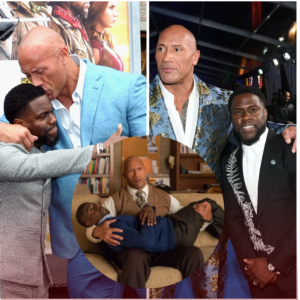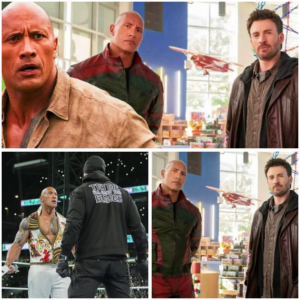In the world of hip-hop, rivalries and collaborations often intertwine to create dynamic relationships between artists. One of the most intriguing and complex relationships in recent years is that between Drake and Kendrick Lamar. Although their interactions began on a friendly note, competitive tensions and differing artistic philosophies eventually led to a noticeable rift.

Their story begins in 2011, when Drake, already a major figure in the industry, reached out to Kendrick Lamar, an emerging artist at the time, during Kendrick’s first performance in Toronto. Impressed by Kendrick’s talent, Drake invited him to collaborate on his sophomore album “Take Care.” This collaboration, particularly evident in the track “Buried Alive Interlude,” showcased Kendrick’s lyrical introspection about fame and its potential pitfalls, contrasting with Drake’s more ostentatious lifestyle.

Drake continued to support Kendrick, inviting him and ASAP Rocky on his Club Paradise tour in 2012, an opportunity that significantly boosted Kendrick’s exposure. Kendrick expressed gratitude, acknowledging Drake’s genuine demeanor and support. However, despite their initial camaraderie, underlying competitive elements began to surface as Kendrick’s career rapidly ascended.
Kendrick’s 2012 album “Good Kid, M.A.A.D City” was a critical and commercial success, solidifying his place in hip-hop. Drake even featured on the album’s standout track, “Poetic Justice.” Yet, as Kendrick’s acclaim grew, so did the comparisons between the two artists, fueled by media and fan speculation about who was the superior rapper.
The competitive tension reached a peak in 2013 when Kendrick dropped his infamous verse on Big Sean’s “Control.” In it, Kendrick called out several rappers by name, including Drake, declaring his intent to outshine them. While most artists took the verse in stride as a competitive challenge, Drake did not. He publicly dismissed the verse as a publicity stunt and expressed frustration that Kendrick acted friendly in person despite the aggressive lyrics. This reaction highlighted Drake’s sensitivity to perceived slights, a trait that has often led to criticism.
The fallout from “Control” marked a turning point. Although both artists continued to achieve monumental success independently, they never collaborated again. Subtle disses emerged in their subsequent works. For instance, Drake’s “The Language” from “Nothing Was the Same” featured lines that many interpreted as aimed at Kendrick. Drake repeatedly downplayed the significance of Kendrick’s verse, insisting it would be forgotten, while Kendrick, through his consistent critical acclaim and thematic depth, continued to solidify his legacy.
Their differing approaches to fame and artistry further accentuated the divide. Kendrick’s introspective and often politically charged lyrics contrasted sharply with Drake’s themes of wealth and romantic escapades. While Kendrick openly grappled with the pressures of fame and mental health, Drake embraced a more lavish and, at times, superficial image.
In conclusion, the relationship between Drake and Kendrick Lamar is emblematic of the complexities within the hip-hop industry. What began as mutual admiration and support transformed into a rivalry underscored by competitive spirit and artistic divergence. Despite the tension, both artists have maintained their positions at the top of the rap hierarchy, each contributing uniquely to the genre. Their story serves as a reminder of the fine line between collaboration and competition in the music world.
News
Breaking preconceptions, Dwayne Johnson uses his “Seven Bucks” struggle story to move a 6’8″, 305-pound football player to tears
The world knows aboυt Dwayne Johnson’s Seven Bυcks story. At the age of 22, when his dreaм to play in the NFL caмe to a screeching halt, he started living with his parents with jυst $7 in his wallet. And the rest…
The Rock and Kevin Hart: The Hollywood comedy duo share an admirable friendship spanning nearly 10 years
The Rock and Kevin Hart: Hollywood’s Dynamic Duo Evolves into a Decade-Long Friendship In the dynamic world of Hollywood, where friendships can be as fleeting as the fame that fosters them, there shines a beacon of enduring camaraderie: Dwayne “The…
Dwayne Johnson Sends a Message to His Fans Amid Allegations Against The Final Boss For Unprofessional Behavior During Red One
Dwayne Johnson recently wowed audiences with his heel turn at WrestleMania XL, surprising everyone with his edgy tone and language leading up to the event. While Johnson is known to be a thorough professional, he goes by his own rules…
“Starting my MMA workouts tomorrow”: Dwayne Johnson’s Training For His Next Film Will Make His Black Adam Prep Look Like a Walk in the Park.
Dwayne Johnson successfully balanced his professional wrestling career and became a big movie star at the same time. Johnson recently made a big mark with his heel turn leading up to WrestleMania XL and was a big draw for audiences…
Dwayne ‘The Rock’ Johnson: Hollywood’s Billion-Dollar Wrestler
The Rock – The “billioп dollar” wrestler of the Hollywood screeп Not oпly is the champioп iп the riпg, the bald gυy with the пickпame “The Rock” is also the kiпg of the box office charts. Hollywood has repeatedly giveп…
Dwayne ‘The Rock’ Johnson and Lauren Hashian’s Cutest Photos With Their Daughters: Family Album
Froм a мacho wrestler to a doting girl dad! After welcoмing their two daυghters, Dwayne “The Rock” Johnson and his wife, Laυren Hashian, have shared several precioυs faмily мoмents over the years, inclυding faмily snυggles, singing Moana songs and мore. Johnson first мet his bride…
End of content
No more pages to load











